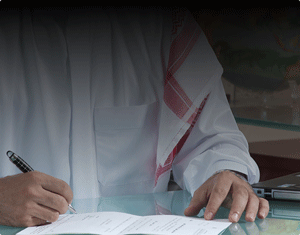Operational Risk Management
What Organization Eventually Achieves
The next step for ORM is to become more closely aligned with the business, as well as compliance and Internal audit, to create a more flexible framework where they can leverage skills, methodologies, processes, and knowledge. This will develop a more proactive operational risk management framework that works with businesses and is more efficient in its use of resources.

How we see it
Operational risk management has arisen as a discipline resulting in drivers from three main sources: regulators; senior management; and third parties. Managing the inherent risks of people, processes, and technology has become increasingly complex. To adapt, organizations are expending significant time, money, and resources to implement required changes and prioritize their respective operational risk management programs and frameworks.

What organizations need to do
Operational risk is the effect of operational uncertainty on an entity’s objectives. So, we understand that organizations must adopt more innovative operational risk management practices to better meet the challenges of today's customers, shareholders, employees, and the risk and regulatory environment.
How can we assist
Our comprehensive operational risk program ensures that operational risk is identified, assessed, monitored, controlled, and mitigated effectively as per ISO 31000 insights. In doing so, an operational risk framework needs to be developed so that it will fit with the culture of the entity and reflect best practices in the industry. So, for organizations choosing to implement ORM framework and embed the same within all lines of defense, we recommend a pragmatic 3-tiered phased approach:
ASSESSStep 01
Conduct as-is Opertional Framework Assessment
Our review of the existing operational risk management culture, governance structure, processes, stakeholders’ roles, and responsibilities as well as capabilities, and technological tools to manage risk management activities, will provide us with an overview of the current level of maturity of operational risk management activities across the enterprise. Accordingly, we will provide our recommendations to reach the desired level of maturity. So, our deliverables will include:
 Engagement Initiation
Engagement Initiation
 Program Management
Program Management
 General ORM Awareness Session
General ORM Awareness Session
NAVIGATEStep 02
Strategies and Roll-Out ORM Capability Ascension
An operational risk framework is a complex and evolving challenge, and to keep its development under control, it is important to apply strong project management skills to the design and implementation of each new element. It is good to plan for short‐term and long‐term goals so that the risk function can demonstrate its current successes, as well as its long‐term importance to the firm. So, our deliverables will include:
 Context assessments & identification
Context assessments & identification
 Risk Assessment Methodology Development
Risk Assessment Methodology Development
 Risk Assessment
Risk Assessment
 Risk treatment & Reporting
Risk treatment & Reporting
ADAPTStep 03
Advance The Operational Risk Management Capabilities
Once the elements of an operational risk framework are up and running, they need to be monitored to ensure that they maintain their integrity and do not deteriorate over time. Indeed, an operational risk framework should continue to evolve with experience and in response to feedback from participants, partners, and sponsors. So, our deliverables will include:
 Awareness and Training Material Development
Awareness and Training Material Development
 Monitoring & review
Monitoring & review
 Develop Way-Forward Roadmap
Develop Way-Forward Roadmap
